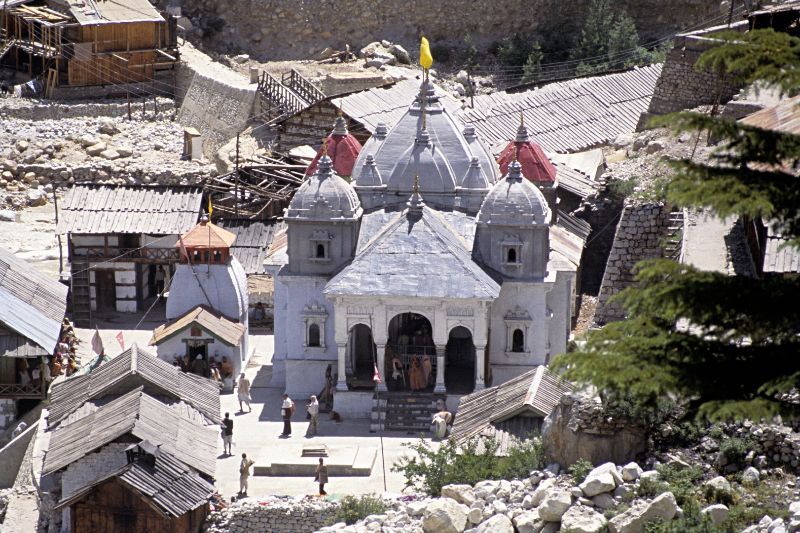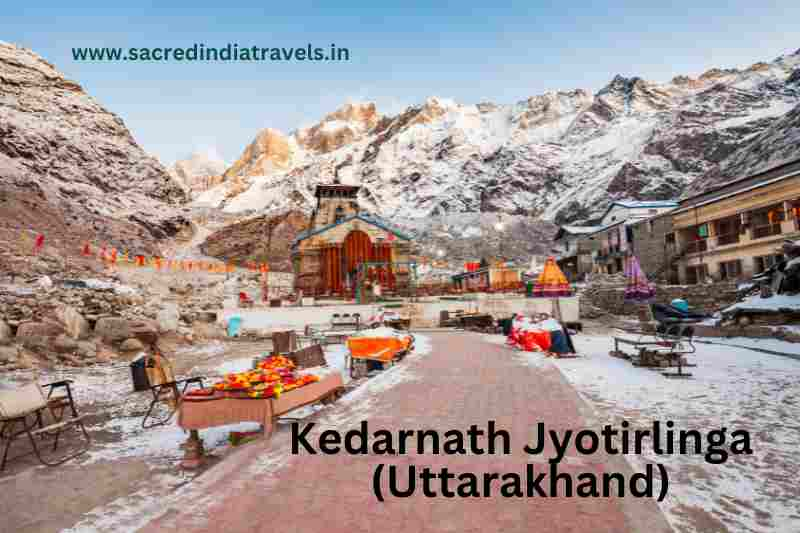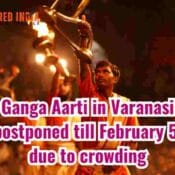
Chardhams of Uttarakhand: Locations, Best Time & How to Get There
The Chardham Yatra in Uttarakhand, including Yamunotri, Gangotri, Kedarnath, and Badrinath, holds immense spiritual significance for Hindus. Each of these sites is dedicated to a specific deity, and collectively, they represent the journey to attain salvation. Nestled in the majestic Himalayas, these holy shrines not only provide spiritual relaxation but also allow visitors to witness the unique beauty of nature.
1. Yamunotri

Location: Situated at an altitude of 3,293 m in the Garhwal Himalayas at 150 kilometres (93 mi) North of Uttarkashi. The Yamuna River originates from the Yamunotri .
Story Behind Yamunotri:
According to Hindu mythology, the ashram of Sage Asita was near Yamunotri. Throughout his life, he used to bathe in both the Ganges and the Yamuna daily. Unable to visit Gangotri in his old age, a stream of Ganga miraculously appeared near Yamunotri.
The Yamuna River originates from the Yamunotri glacier (4,421 m), which is just below the Bandarpoonch mountain. The mountain adjacent to the source of the river is dedicated to her father Surya, and is called Kalinda Parvat (Kalinda – Another Name of Lord Sun).
Significance of Yamunotri: Yamunotri is dedicated to Goddess Yamuna. According to Hindu mythology, taking a dip in the river Yamuna washes away all sins and leads to painless death.
Main Attractions at Yamunotri :
- Yamunotri Temple: This temple is dedicated to Goddess Yamuna and was built in the19th century by Maharani Guleria of Jaipur.
- Surya Kund: A hot water spring near the temple, where devotees cook rice and potatoes to offer to the deity.
- Divya Shila: A rock pillar near Surya Kund, which is worshipped before entering the Yamunotri Temple.
To Book your Trip With Sacred India Tour & Travels, Click Here
2. Gangotri

Location: Gangotri, at an altitude of 3,100 m, is located in the district of Uttarkashi at 99 km from Uttarkashi. It is the origin of the holy river Ganges.
Story Behind Gangotri:
According to Hindu mythology, the holy river Ganges (or Ganga) descended from heaven to earth at Gangotri, when Lord Shiva released the mighty river from his locks to stop the flood. The actual origin of the river is at Gaumukh in the Gangotri Glacier, which is 19 km from Gangotri, and can be reached by trekking. After originating from Gaumukh, the river is called Bhagirathi, and when it merges into the Alaknanda River near the town of Devprayag, it takes the name Ganga. The kapatas (temple gates) are open from March to October for darshan (pilgrimage).
Significance:
The Gangotri Temple is dedicated to Goddess Ganga. It is the place where the river Ganga descended from heaven.
Main Attractions :
- Gangotri Temple: Built by Amar Singh Thapa in the early 18th century, this temple is the focal point of the Gangotri pilgrimage.
- Gaumukh Glacier: Located about 19 km from Gangotri, it is the actual source of the river Ganga.
- Bhairav Valley: A picturesque place near Gangotri, known for its natural beauty and the temple dedicated to Bhairav Nath.
To Book your Trip With Sacred India Tour & Travels, Click Here
3. Kedarnath

Location: Kedarnath is situated at an altitude of 3,583 meters in Rudraprayag district. It is the most remote of the four dhams.
Story Behind Kedarnath:
The historical name of this region is Kedar Khand and according to mythology, after defeating the Kauravas, the Pandavas of the epic Mahabharata felt great sense of guilt killing so many people. In search of liberation, they sought the blessings of Lord Shiva. However, the Lord dodged them and eventually took refuge in Kedarnath in the form of a bull. He dived into the ground in Kedarnath, leaving his hump on the surface. The remaining parts of Lord Shiva appeared at four other places and are worshipped as his manifestations: his arms in Tungnath, His face at Rudranath, his belly in Madmaheshwar and his hair in Kalpeshwar. Together, these five temples form the revered Panch Kedar pilgrimage circuit.
Significance: Kedarnath Temple, dedicated to Lord Shiva, is one of the twelve Jyotirlingas and holds immense religious significance.
Main Attractions :
- Kedarnath Temple : Built by the Pandavas and later renovated by Adi Shankaracharya, this stone temple stands majestically amidst snow-capped peaks .
- Vasuki Tal: A high-altitude lake that offers spectacular views of the surrounding Himalayan ranges.
- Shankaracharya Samadhi: The final resting place of Adi Shankaracharya, located just behind the Kedarnath temple.
To Book your Trip With Sacred India Tour & Travels, Click Here
4. Badrinath

Location: Badrinath is located in Chamoli district at a height of 3,133 meters. It is the easiest of the four Dhams.
Story Behind Badrinath:
The ancient Badrinath temple is steeped in mythology. It is said that Lord Vishnu meditated here for thousands of years and appeared as Lord Badrinath while Goddess Lakshmi took the form of a plum tree to protect him. This is why the place is called Badrikashram or Badri Dham.
The temple dates back to around 500 BC and is dedicated to Lord Vishnu as well as Lord Shiva. The Tapt Kund, located nearby, is a natural hot water spring, associated with Lord Shiva and pilgrims take a bath there before visiting the temple.
According to the Mahabharata, the Pandavas passed through Badrinath on their journey to the other world. The present temple was founded in the 8th century AD. It was done by Adi Shankaracharya, who found the idol of Lord Badrinarayan in the Alaknanda River and installed it near Tapt Kund.
Significance: The Badrinath Temple is dedicated to Lord Vishnu and is part of the Char Dham and Chota Char Dham pilgrimages.
Main Attractions :
- Badrinath Temple: Established by ancient ancestors, this temple houses the idol of Lord Vishnu.
- Garam Kund: A hot spring that is believed to have medicinal properties.
- Neelkanth Peak: The Badrinath temple with snow-capped peaks provides a stunning backdrop.
To Book your Trip With Sacred India Tour & Travels, Click Here
Best Time to Visit Char Dham of Uttarakhand
The best time to undertake the Chardham Yatra is during the summer months, from late April to early June, and during the autumn months of September and October. These periods offer pleasant weather and safe travel conditions. The monsoon season from late June to August is usually avoided due to heavy rains and the risk of landslides.
How to Reach Char Dham of Uttarakhand
By Air : Nearest Airports to Char Dham of Uttarakhand
- Jolly Grant Airport, Dehradun: It is the nearest Airport to Yamunotri and Gangotri, The airport is located about 210 km and 250 km away from both, respectively.
- Pantnagar Airport: Nearest Airport for Badrinath, which is located about 310 km away.
By Train : Nearest Railway Station to Char Dham of Uttarakhand
- Rishikesh: Nearest to Yamunotri and Gangotri, about 213 km and 243 km respectively.
- Haridwar: Well-connected to major cities and located about 320 km from Badrinath .
- Dehradun: About 114 km from Yamunotri and 227 km from Gangotri.
By Road to Char Char Dham of Uttarakhand
- Yamunotri: Can be reached via Badkot from Dehradun (176 km) and Rishikesh (213 km.
- Gangotri: Can be reached via Uttarkashi from Rishikesh (243 km) and Dehradun (227 km.
- Kedarnath: Gaurikund (207 km from Rishikesh ) can be reached by road, followed by a 16 km climb.
- Badrinath: It is well connected by road and is located about 320 km from Haridwar.
To Book your Trip With Sacred India Tour & Travels, Click Here
Detailed itinerary for Chhota Char Dham or Char Dham of Uttarakhand
Day 1: Arrival at Haridwar
- Activities: Attend the evening Ganga Aarti at Har Ki Pauri.
- Overnight stay: Haridwar
Day 2: Haridwar to Badkot
- Journey: About 220 km by road.
- Activities: Visit Kempty Falls in Mussoorie along the way .
- Overnight stay: Badkot
Day 3: Badkot to Yamunotri
- Journey: 36 km to Janki Chatti by road, followed by 6 km climb till Yamunotri.
- Activities: Visit Yamunotri Temple and Surya Kund .
- Overnight stay: Badkot
Day 4: Badkot to Uttarkashi
- Travel: About 100 km by road.
- Activities: Visit the Vishwanath Temple in Uttarkashi.
- Night Rest: Uttarkashi
Day 5: Uttarkashi to Gangotri
- Travel: About 100 km by road.
- Activities: Visit the Gangotri Temple and take a dip in the holy Ganges.
- Night Rest: Uttarkashi
Day 6: Uttarkashi to Guptkashi
- Travel: About 220 km by road.
- Activities: Visit Tehri Dam on the way.
- Night Rest: Guptkashi
Day 7: Guptkashi to Kedarnath
- Journey: 30 km to Gaurikund by road, followed by 16 km climb or helicopter ride.
- Activities: Visit Kedarnath Temple.
- Night Rest: Kedarnath
Day 8: Kedarnath to Guptkashi
- Journey: Return journey to Gaurikund, then drive to Guptkashi.
- Night Rest: Guptkashi
Day 9: Guptkashi to Badrinath
- Travel: About 200 km by road.
- Activities: Darshan of Badrinath Temple and Tapta Kund.
- Night Rest: Badrinath
Day 10: Badrinath to Rishikesh
- Travel: About 300 km by road.
- Activities: Visit to Devprayag and Rudraprayag on the way.
- Night Rest: Rishikesh
Day 11: Departure from Rishikesh
- Activities: Visit Ram Jhula and Laxman Jhula in Rishikesh before departure.
To Book your Trip With Sacred India Tour & Travels, Click Here
Frequently Asked Questions (FAQ)
Question 1: What is the significance of Chardham Yatra?
Answer: Chardham Yatra holds immense spiritual significance for Hindus. It is believed that performing this pilgrimage helps in attaining moksha (liberation) and all sins are washed away.
Question 2: Is Chardham Yatra physically difficult?
Answer: Yes, the journey can be physically difficult, especially the journey to Kedarnath. It is advisable to be physically prepared before starting the journey.
Question 3: What is the best time to visit Chardham?
Answer: The best time is from late April to early June and September to October. Monsoon season should be avoided due to heavy rains and landslides.
Question 4: Are there any medical facilities available along the way of Char Dham Yatra?
Answer: Basic medical facilities are available in major cities along the route. It is advisable to carry a personal medical kit and consult a doctor before starting the journey.
Question 5: Can elderly people undertake Chardham Yatra?
Answer: Yes, elderly people can travel, but they should consult their doctors and consider using helicopter services for Kedarnath.
Question 6: Are there any accommodation facilities available?
Answer: Yes, there are many accommodation options available at various locations on the travel route, from budget to mid-range hotels, guesthouses, and lodges.
To Book your Trip With Sacred India Tour & Travels, Click Here




